Copyright(版权)
Table of Contents
Preface
Finding the Code for This Book
Dealing with Jargon: A Glossary
Conventions Used in This Book
Using Code Examples
Safari® Books Online
How to Contact Us
Acknowledgments
Chapter 1. Two Characters: Exploration and Exploitation
The Scientist and the Businessman
Cynthia the Scientist
Bob the Businessman
Oscar the Operations Researcher
The Explore-Exploit Dilemma
Chapter 2. Why Use Multiarmed Bandit Algorithms?
What Are We Trying to Do?
The Business Scientist: Web-Scale A/B Testing
Chapter 3. The epsilon-Greedy Algorithm
Introducing the epsilon-Greedy Algorithm
Describing Our Logo-Choosing Problem Abstractly
What’s an Arm?
What’s a Reward?
What’s a Bandit Problem?
Implementing the epsilon-Greedy Algorithm
Thinking Critically about the epsilon-Greedy Algorithm
Chapter 4. Debugging Bandit Algorithms
Monte Carlo Simulations Are Like Unit Tests for Bandit Algorithms
Simulating the Arms of a Bandit Problem
Analyzing Results from a Monte Carlo Study
Approach 1: Track the Probability of Choosing the Best Arm
Approach 2: Track the Average Reward at Each Point in Time
Approach 3: Track the Cumulative Reward at Each Point in Time
Exercises
Chapter 5. The Softmax Algorithm
Introducing the Softmax Algorithm
Implementing the Softmax Algorithm
Measuring the Performance of the Softmax Algorithm
The Annealing Softmax Algorithm
Exercises
Chapter 6. UCB – The Upper Confidence Bound Algorithm
Introducing the UCB Algorithm
Implementing UCB
Comparing Bandit Algorithms Side-by-Side
Exercises
Chapter 7. Bandits in the Real World: Complexity and Complications
A/A Testing
Running Concurrent Experiments
Continuous Experimentation vs. Periodic Testing
Bad Metrics of Success
Scaling Problems with Good Metrics of Success
Intelligent Initialization of Values
Running Better Simulations
Moving Worlds
Correlated Bandits
Contextual Bandits
Implementing Bandit Algorithms at Scale
Chapter 8. Conclusion
Learning Life Lessons from Bandit Algorithms
A Taxonomy of Bandit Algorithms
Learning More and Other Topics
About the Author
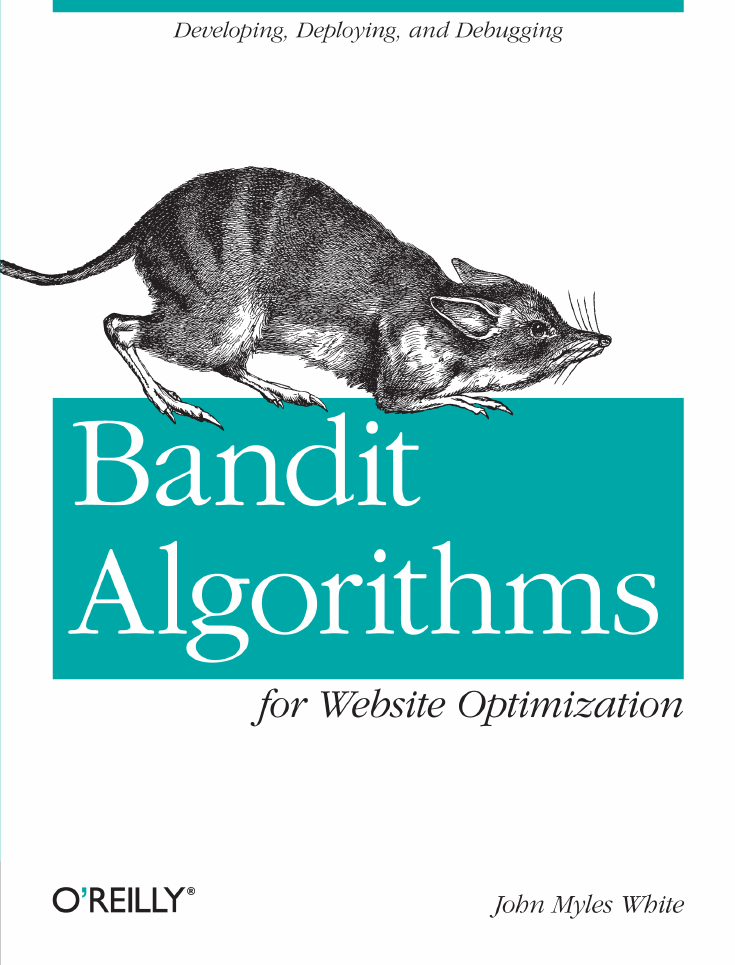
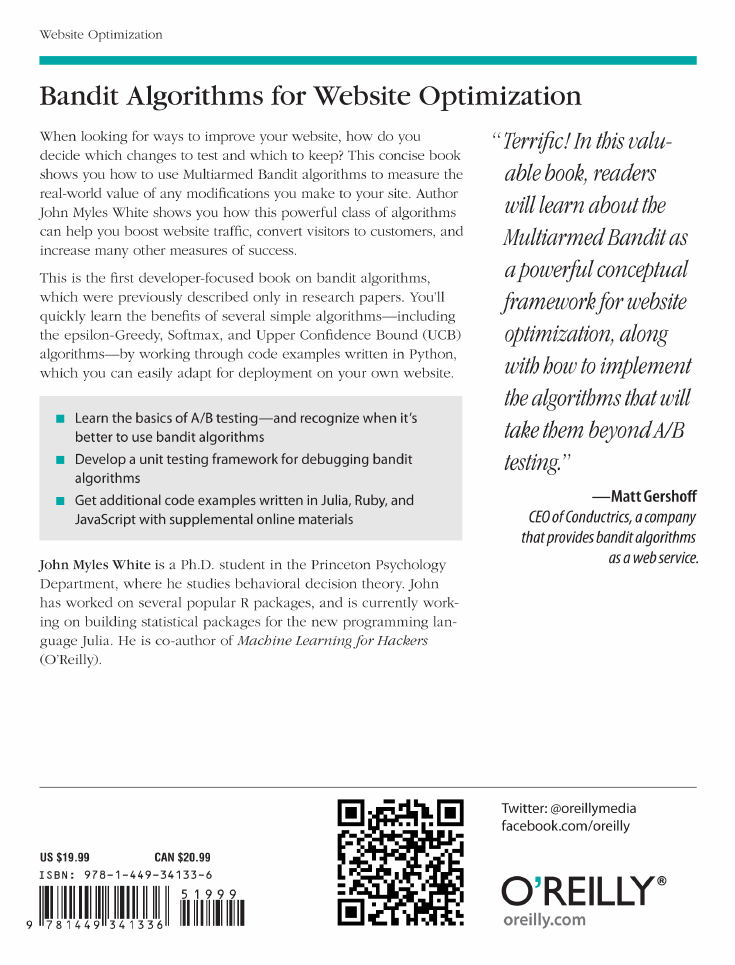
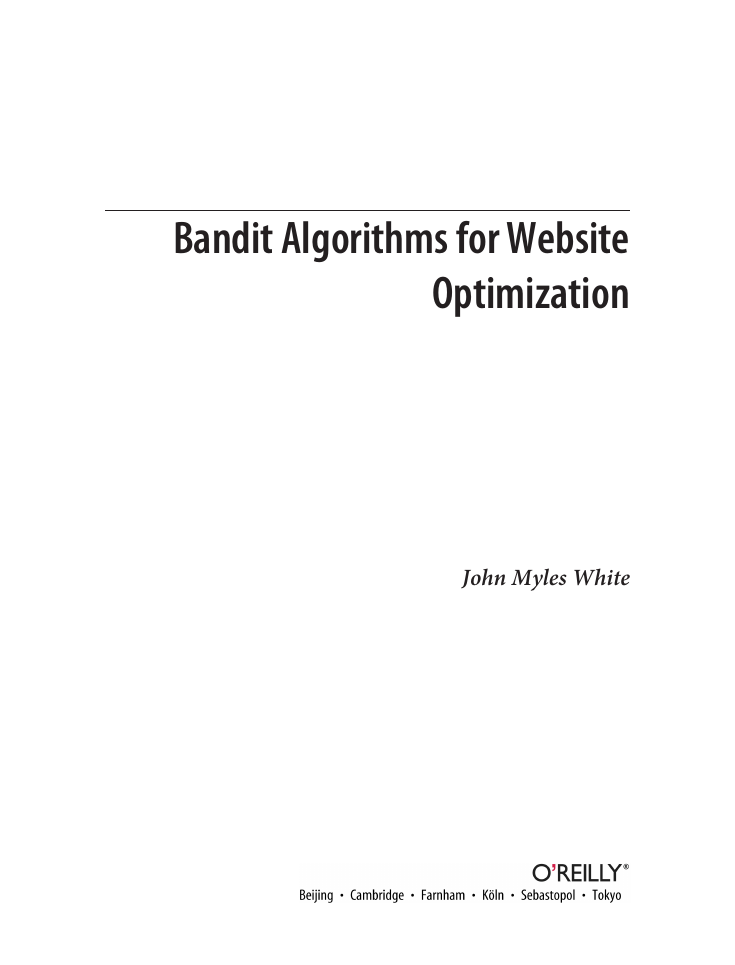
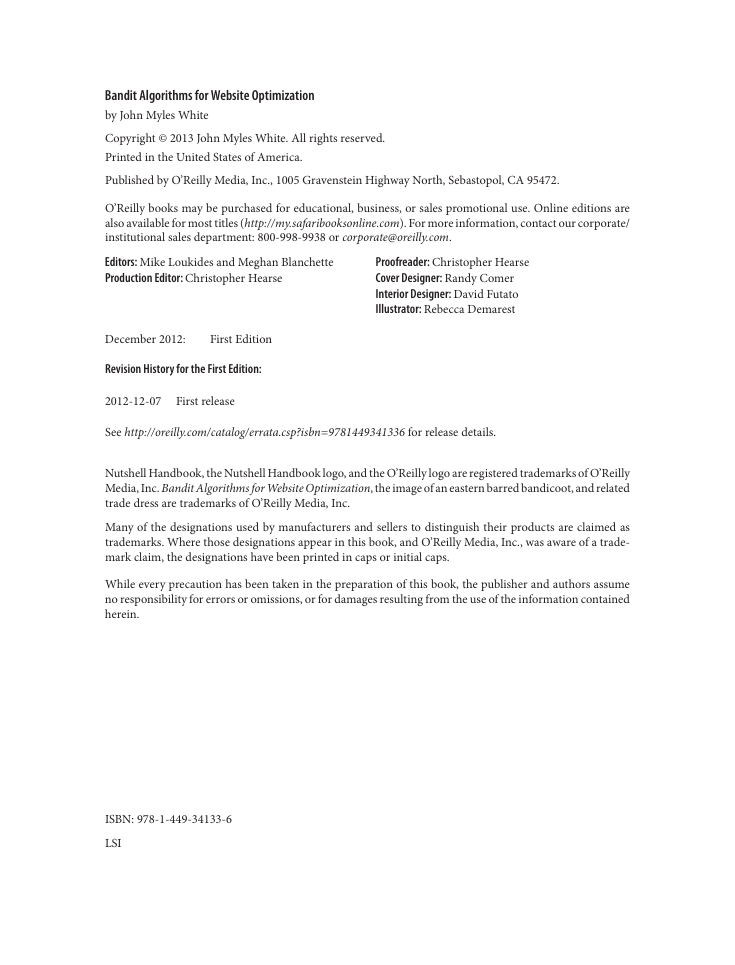
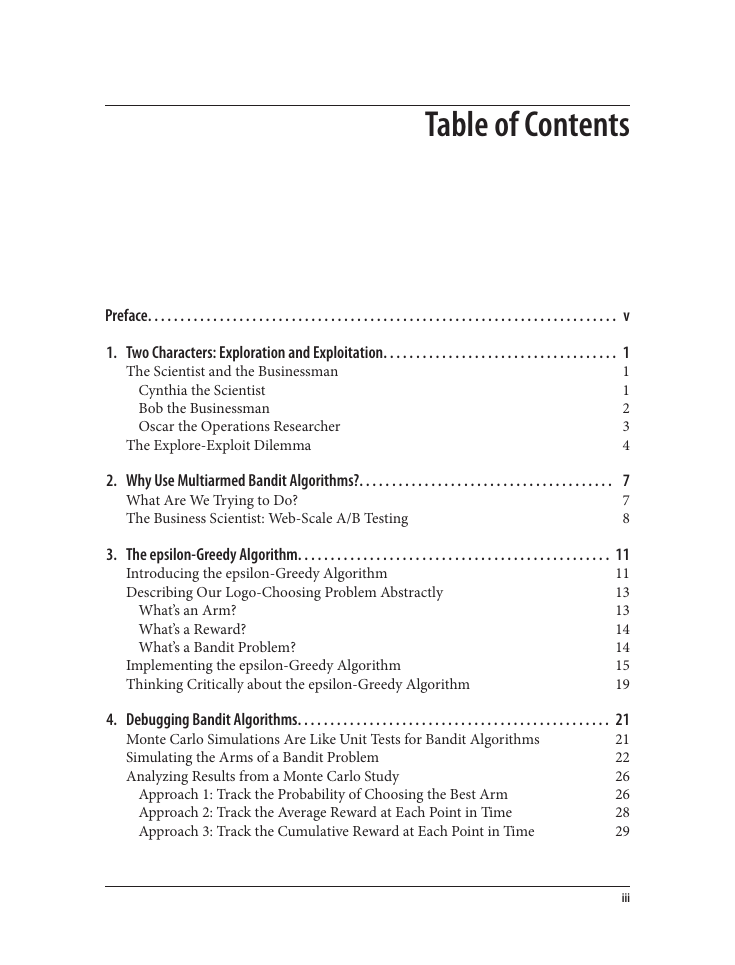
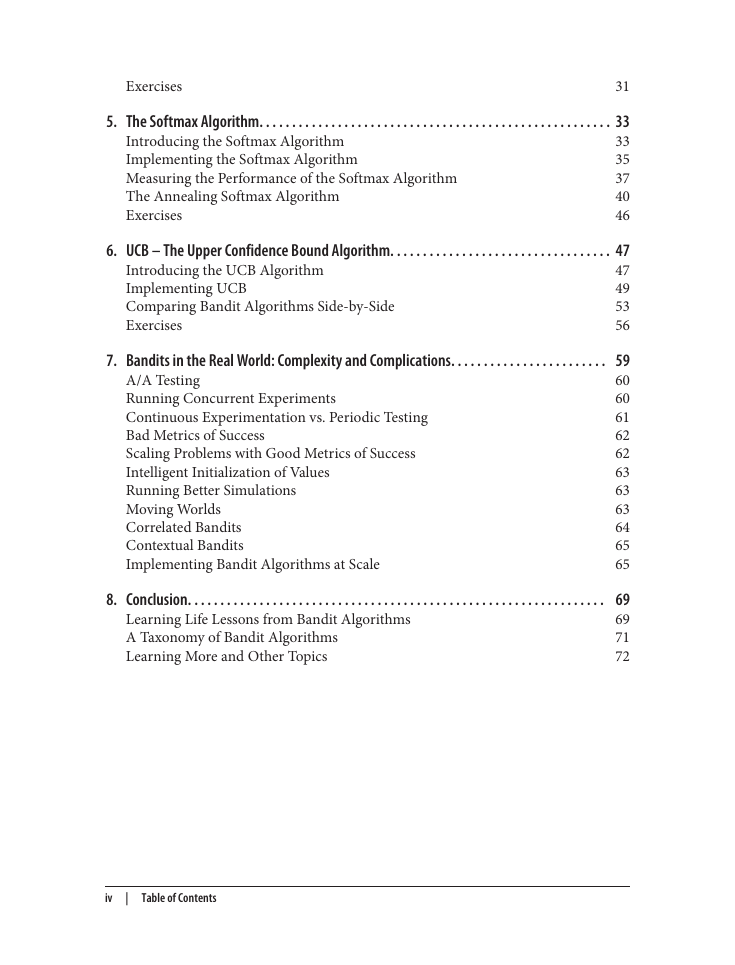
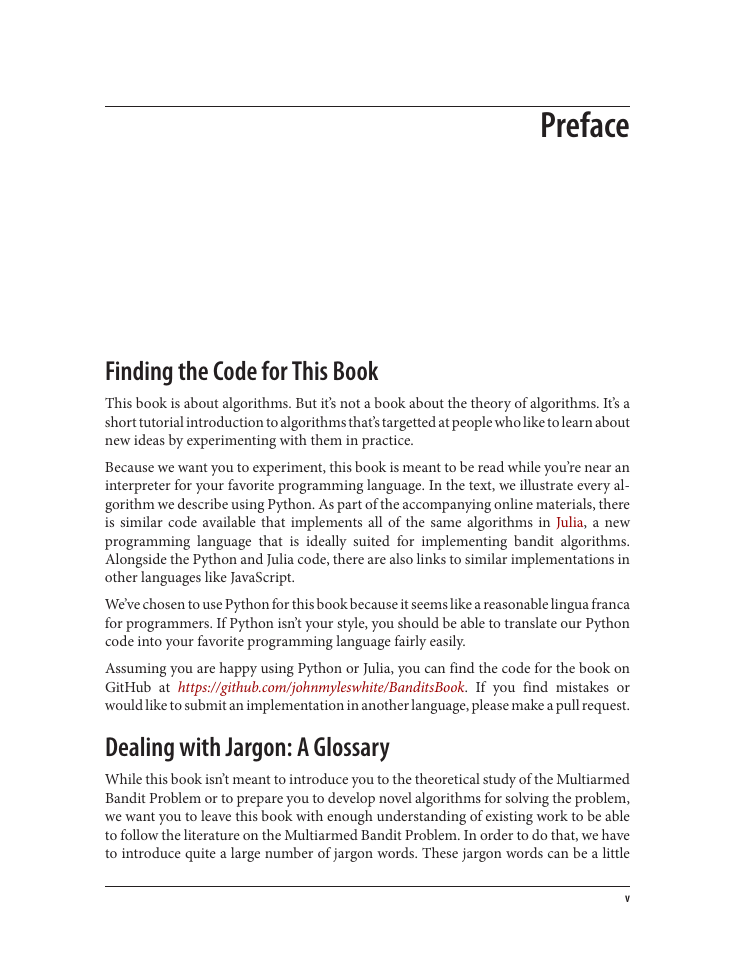
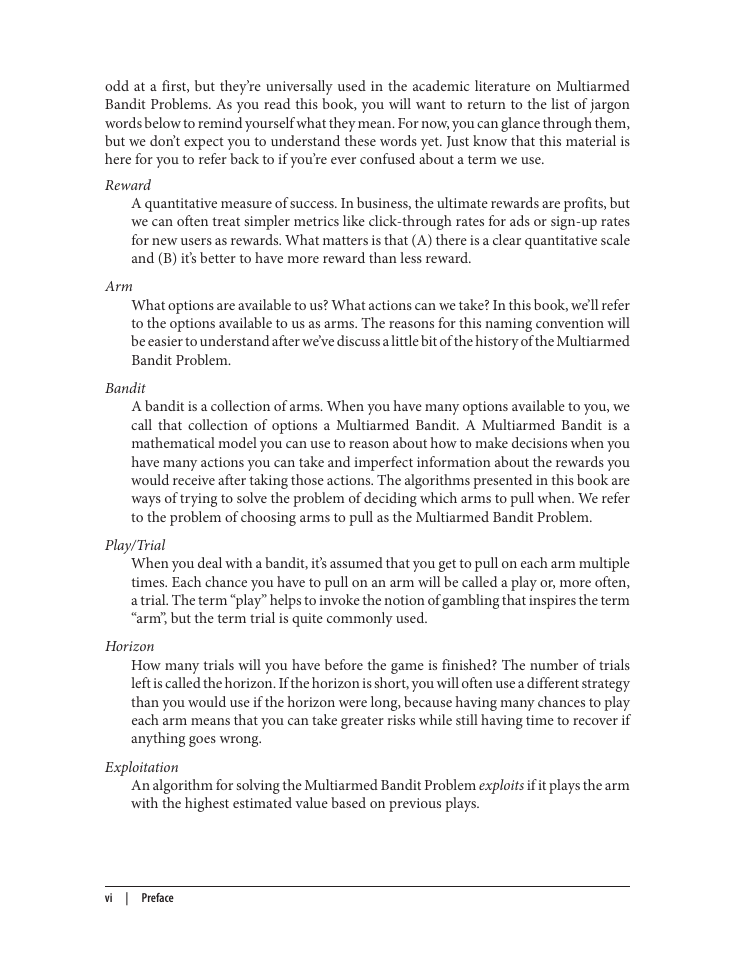








 2023年江西萍乡中考道德与法治真题及答案.doc
2023年江西萍乡中考道德与法治真题及答案.doc 2012年重庆南川中考生物真题及答案.doc
2012年重庆南川中考生物真题及答案.doc 2013年江西师范大学地理学综合及文艺理论基础考研真题.doc
2013年江西师范大学地理学综合及文艺理论基础考研真题.doc 2020年四川甘孜小升初语文真题及答案I卷.doc
2020年四川甘孜小升初语文真题及答案I卷.doc 2020年注册岩土工程师专业基础考试真题及答案.doc
2020年注册岩土工程师专业基础考试真题及答案.doc 2023-2024学年福建省厦门市九年级上学期数学月考试题及答案.doc
2023-2024学年福建省厦门市九年级上学期数学月考试题及答案.doc 2021-2022学年辽宁省沈阳市大东区九年级上学期语文期末试题及答案.doc
2021-2022学年辽宁省沈阳市大东区九年级上学期语文期末试题及答案.doc 2022-2023学年北京东城区初三第一学期物理期末试卷及答案.doc
2022-2023学年北京东城区初三第一学期物理期末试卷及答案.doc 2018上半年江西教师资格初中地理学科知识与教学能力真题及答案.doc
2018上半年江西教师资格初中地理学科知识与教学能力真题及答案.doc 2012年河北国家公务员申论考试真题及答案-省级.doc
2012年河北国家公务员申论考试真题及答案-省级.doc 2020-2021学年江苏省扬州市江都区邵樊片九年级上学期数学第一次质量检测试题及答案.doc
2020-2021学年江苏省扬州市江都区邵樊片九年级上学期数学第一次质量检测试题及答案.doc 2022下半年黑龙江教师资格证中学综合素质真题及答案.doc
2022下半年黑龙江教师资格证中学综合素质真题及答案.doc